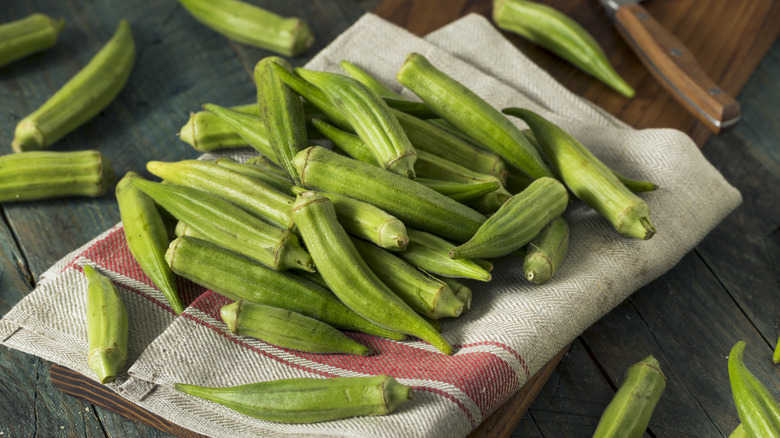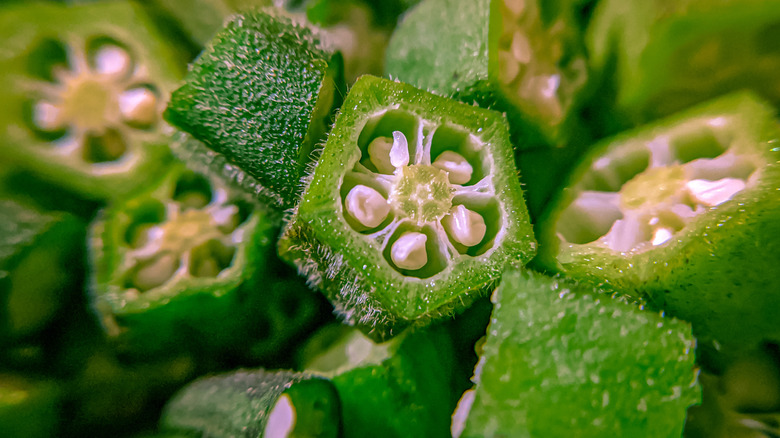How To Freeze Fresh Okra For Later
Okra is a soul food staple that's remarkably versatile and can be used in a variety of ways, from pickling to frying. Generally in season from summer to early fall, if you're fortunate enough to pick up or grow some fresh okra, you'll want to ensure that it lasts. Fortunately, okra freezes really well and can be kept in the freezer for up to a year.
When freezing okra, you should thoroughly wash the pods and dry them before cutting off the woody stems. Just be sure not to cut too far down and expose the seeds. At this point, you can either blanch the okra or lay it on a baking sheet to freeze for a few hours before putting it in a freezer bag. While okra can be frozen without blanching, the process can be important for deactivating enzymes so okra can maintain its fresh color and flavor. To blanch okra, add the pods to boiling water with small pods (under 4 inches) blanching for three minutes and large pods (over 5 inches) blanching for four minutes. After blanching, remove pods from boiling water and immediately place them in ice water for the same amount of time that they've cooked.
Once your okra is cooled, you can freeze them as-is or chop them into pieces. Whole okra can be good for frying or roasting, while slices or rounds are better for gumbos and sauteed dishes. If you're unsure what you plan on cooking, consider leaving some whole and slicing up others so you have a bit of both on hand.
How to thaw out frozen okra when you're ready to use it
When you're ready to use your frozen okra, there are a few ways you can go about defrosting it so that it maintains its flavor and texture. The easiest way is to not thaw it at all, which will work if you're making things like gumbo, stir-fry, or soup. In recipes like these, okra can be added frozen and will thaw as they cook with no flavor loss. However, if you need to thaw okra, you can either put it in the refrigerator overnight or place the bag in cold water for one to two hours.
While you're getting your okra from the freezer, make sure to check for any signs of freezer burn, like discoloration or dry spots. Although this won't make the okra unsafe to eat, it can change the texture of it, which can be important depending on how you're cooking it. For instance, if you're using the okra in a casserole or gumbo, mild freezer burn can be masked through cooking and spices, but if you'll be eating the okra on its own sauteed or fried, it might not be pleasant.

